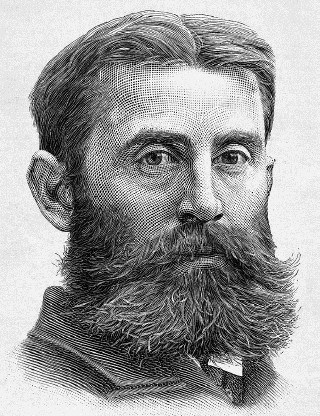This 139th episode is titled Evangementalism,
We’ve spent a couple of episodes laying out the genesis of Theological Liberalism, and concluded the last episode with a brief look at the conservative reaction to it in what’s been called Evangelicalism. Evangelicalism was one of the most important movements of the 20th C. The label comes from that which lies at the center of the movement, devotion to an orthodox and traditional understanding of the Evangel, that is, the Christian Gospel – the Good News of salvation through faith in Jesus Christ.
While Evangelicalism is used today mainly to describe the theological movement that came about as a reaction to Protestant theological liberalism, the term can be applied all the way back to the 1st C believers who referred to themselves as “People of the Gospel,” the Evangel. The term was resurrected by Reformers to call themselves “evangelicals” before identifying as Protestants or any of the other labels used for protestant denominations today.
The modern flavor of Evangelicalism came about as a merging of European Pietism and revivals among Methodists in England. We might even locate the origin of modern Evangelicalism in the First Great Awakening of the mid-18th C. Its midwives were people like Whitefield, Tennent, Freylinghuysen, and of course Jonathan Edwards.
Since major stress of all these was the need for a conversion experience and spiritual new birth, revivalism and an emphasis on the task of evangelism have been front and center in Evangelicalism.
As we’ve seen in a past episode, the First Great Awakening was followed a century later by the Second which began in the United States and spread to Europe, then the rest of the world and had a huge impact on how Christians viewed their Faith. What’s remarkable about the Second Great Awakening, is that it came at a time when many church leaders lamented the low state of the Church in Western Civilization. Christianity’s enemies gleefully wrote its obituary. Theological Liberalism helped to push the Faith toward an early grave. But the Second Great Awakening literally shook North American and Europe to their core. A wave of missionaries went out across the globe as a result, spreading the Faith to places no church had existed for hundreds of years, and in some cases, ever before.
In newly settled regions on the American frontier, Evangelicalism was carried out in week-long “camp meetings.” Think of a modern concert with multiple bands. Camp meetings were like that, except in place of bands playing music were preachers passionately preaching the Gospel. Might not sound too appealing to our modern sensibilities, but the lonely pioneers of the frontier turned out in large crowds. They’d been too busy building homesteads to consider constructing frontier churches. But now they returned home to do that very thing.
One of the largest of these camp meetings took place at Cane Ridge in Kentucky in August 1801. Upwards of 20,000 gathered to listen to Protestant preachers of all stripes.
Methodist minister Francis Asbury was just one of several circuit-riders who carried the Gospel all over the frontier. Both Baptists and Methodists worked tirelessly to bring the Gospel to blacks. But the fierce racism of the time refused to integrate congregations. Separate churches were plated for black congregations, of which there were many. In the early 19th C, Richard Allen left the Methodist Church to found the African Methodist Episcopal Church. In the US, it wasn’t long before Evangelical Baptists and Methodists outnumbered older denominations of Episcopalians and Presbyterians, groups where theological liberalism had infiltrated.
Charles Finney was an attorney-turned-revivalist who transferred the excitement and energy of the rural camp-meetings to the urban centers of the American Northeast. An innovator, Finney encouraged the newly converted to share the story of how they came to the Faith – called ‘giving your testimony.’ He set what he called an “anxious bench” near the front of rooms where he spoke as a place where those who wanted prayer or to make a profession of faith in Christ could sit. That eventually turned into the modern ‘altar call’ that’s a standard fixture of many Evangelical churches today.
By the start of the American Civil War in the mid-19th C, Evangelicalism was the predominant religious position of the American people. In an address delivered 1873, Rev. Theodore Woolsey, one-time president of Yale could say, without the least bit of controversy; “The vast majority of people believe in Christ and the Gospel. Christian influences are universal. Our civilization and intellectual culture are built on that foundation.”
While there are many brands, flavors, and emphases inside modern Evangelicalism, it’s safe to characterize an Evangelical as someone who holds to several core beliefs: those being à
1) The authority and sufficiency of Scripture
2) The uniqueness of salvation through the cross of Jesus Christ,
3) The need for personal conversion
4) And the urgency of evangelism
Further refining of Evangelicalism took place when there was a debate over the first of its core doctrines – the authority and sufficiency of Scripture. This is where Fundamentalism diverged from Evangelicalism. The other three core distinctives of Evangelicalism all rest on the authority and sufficiently of the Bible. And while Evangelicalism began as a reaction to theological liberalism, some of the ideas of that liberalism crept into some Evangelical’s view of Scripture.
You see, it’s one thing to say Scripture is authoritative and sufficient and another to then say the entire Bible is Scripture. Is the Bible God’s Word, or does it just contain God’s Word? Do we need scholars and those properly educated to tell us what is in fact Scripture and what’s filler? Are the actual WORDS God’s Words, or do the words need to be taken together collectively so that it’s not the words but the meaning they convey that makes for God’s authoritative message?
Some Evangelical leaders noticed their peers were moving to a position that said the Bible wasn’t so much God’s Word as it contained God’s Message. While they weren’t as extreme as the Liberal Theologians, they effectively ended up in the same place. This debate goes on in the Evangelical church today and continues to be the source of much unrest.
Conservative Evangelicals started linking the authority of Scripture to the doctrine of inerrancy; that is, belief the Bible’s original writings contained no errors, and that because of the laborious process of transmission of the texts over time, while we can’t say our modern translations are perfect or without any error, they are virtually inerrant; they are trustworthy versions of the originals.
At the dawn of the 20th C, Princeton Theological Seminary became the epicenter of this debate as a leading defender of the authority of the Bible. It had long been an advocate for the infallibility of Scripture under such luminaries as Archibald Alexander, Charles Hodge, his son, AA Hodge, and BB Warfield. In a seminal essay on the doctrine of Inspiration in the Princeton Review, AA Hodge and BB Warfield defined inspiration as producing the “absolute infallibility” of Scripture. They said the autographs, the original writings of the Bible were free from error, not just in regard to theological matters, but in contradiction to what theological liberalism claimed, they were without error in regard to ALL their assertions, including those touching science and history.
The theological liberalism coming from Europe had a mixed reception in the US at the outset of the 20th C. At first, most churches remained conservative and blissfully unaware of the slow sea-change taking place in the intellectual centers of American universities and seminaries. Battle lines were drawn between liberals and conservatives who were branded with a new label = Fundamentalists. The battle they carried out in the hallowed halls of academia soon spilled over into the pews. It was referred to as the contest between modernists and fundamentalists.
While modernists embraced a host of varying ideologies, they shared two presuppositions.
First, they urged, Christianity must be reframed in light of new insights; meaning the tenants of Protestant Liberalism.
Second, the Faith had to be liberated from the cultural encrustations of traditionalism that had obscured the REAL MEANING of the Bible. What that effectively meant was that ALL and ANY traditional beliefs about what the Bible said was no longer valid. It was a knee-jerk rejection of conservatism.
Though the term Fundamentalism wasn’t coined until 1920, it flowed from the 1910 publication The Fundamentals. It was a synthesis of different conservative Protestants who united to battle the Modernists who seemed to be taking over Evangelicalism. Fundamentalists banded together to launch a counteroffensive.
There were 2 streams of the early Fundamentalist movement.
One was intellectual fundamentalism led by J. Gresham Machen [Gres’am May-chen] and his Calvinist peers at Princeton. [the ‘h’ in Gresham is silent!]
The other was populist fundamentalism led by CI Schofield who produced the best-selling Scofield Reference Bible which contained his expansive notes and laid out a dispensationalism many found appealing.
Other notable fundamentalist leaders were RA Torrey, DL Moody, Billy Sunday, and the Holiness Movement that moved in several denominations, most notably the Nazarenes.
While the intellectual and populist streams of fundamentalism attempted to unite in their opposition to modernism, there were simply too many doctrinal differences between all the various groups inside the movement to allow for a concerted strategy in dealing with Liberalism. As a result, Modernists were able to continue their infiltration and take-over of the intellectual centers of the Faith.
In reaction to modernists, in 1910, a group of conservative Presbyterians responded with five convictions that came to be considered the core Fundamentals from which the movement derived its name. Those five convictions flowed from their certainty in the inerrancy and infallibility of Scripture. They were . . .
1) The inerrancy of the original writings.
2) The virgin birth of Jesus.
3) The substitutionary atonement of Jesus on the cross.
4) His literal, bodily resurrection.
5) A belief that Jesus’ miracles were to be understood as real events and not merely literary mythology meant to teach some ethical imperative. Jesus really fed thousands with a few fish and loaves, really raised Jairus’ daughter from the dead, and really walked on water.
These fundamentals were elaborated and released between 1910 and 15 in a set of booklets called The Fundamentals: A Testimony to the Truth. The Stewart brothers funded their publication and ensured they were distributed to every Christian leader across the US. Some three million copies were circulated before WWI to combat the threat of Modernism.

